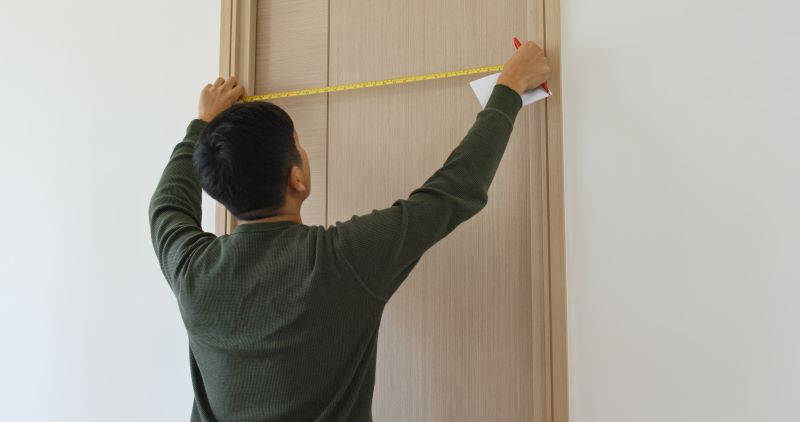Click here to get this post in PDF
When it comes to doors, the right hardware isn’t just about style—it’s about function, durability, and fit. Choosing handles, locks, hinges, or other door accessories without accurate measurements can result in hardware that doesn’t align properly, feels awkward to use, or even compromises security. That’s why learning how to measure your door correctly is one of the most important steps before making a purchase.
If you’re considering upgrading your handles, replacing a lock, or investing in a complete hardware set, reliable suppliers like Homebuilders Hardware offer a wide selection of quality products designed to complement both traditional and modern doors. But before you buy, let’s walk through the key measurements you’ll need to take to ensure the perfect fit.
Why Accurate Door Measurements Matter
It may seem like a small detail, but even a few millimetres can make the difference between a smooth installation and a frustrating experience. Door hardware that doesn’t fit properly can:
- Prevent the door from closing securely.
- Put unnecessary strain on hinges or latches, shortening their lifespan.
- Cause misalignment that affects both function and appearance.
- Reduce the security of your lock system.
By taking precise measurements from the beginning, you’ll not only save yourself from costly mistakes but also ensure that your new hardware enhances your door’s performance and style.
Tools You’ll Need
Before you begin measuring, it’s important to gather the right tools. Luckily, you don’t need anything fancy—just a few basics:
- A tape measure (preferably metric for accuracy)
- A pencil and notepad (or your phone) to record measurements
- A level (for double-checking straight lines)
- A ruler or caliper (for smaller, precise measurements like spindle sizes)
Step 1: Measure the Door Thickness
The first and most crucial measurement is your door’s thickness. Most standard internal doors in Australia measure 35mm to 40mm, while external doors are usually 40mm to 45mm thick for added strength and insulation.
Why does this matter? Door hardware such as locks, latches, and handles are designed with certain thickness ranges in mind. If your door is too thick or too thin for the hardware you select, the screws and fittings may not align properly.
Tip: Always measure at multiple points (top, middle, and bottom) to account for variations in older doors.
Step 2: Measure the Backset
The backset refers to the distance from the edge of the door to the centre of the handle or keyhole. Common backset sizes in Australia are 60mm or 70mm.
To measure it:
- Place your tape measure against the edge of the door.
- Measure to the centre of the existing hole (the borehole) where the handle or lock spindle sits.
If you’re working with a brand-new door without pre-drilled holes, check your chosen hardware specifications and drill accordingly.
Step 3: Measure the Borehole and Cross Bore
The borehole is the circular hole where your door handle or lock mechanism is installed. Standard borehole sizes are typically 54mm, though some locks and handles require smaller or larger diameters. You’ll also want to measure the cross bore—the smaller hole drilled from the edge of the door to intersect with the borehole, usually about 25mm. Measuring both ensures your hardware aligns seamlessly with the existing cut-outs.
Step 4: Check the Spindle Size
Handles operate via a square bar called a spindle that passes through the latch mechanism. The spindle size (usually 7.6mm or 8mm in Australia) must match both your handle and latch for smooth operation. If you’re replacing old hardware, measure the spindle carefully before buying new handles.
Step 5: Measure Door Height and Width (for Hinges)
When fitting or replacing hinges, the overall size and weight of your door are crucial. Standard interior doors are around 2040mm high and 820mm wide, but older homes may vary.
Heavier or wider doors require stronger or additional hinges for stability. For example:
- Lightweight internal doors usually need two hinges.
- Heavier solid timber or external doors may require three hinges.
Measuring accurately will help you choose the right hinge size and quantity for smooth, long-lasting performance.
Step 6: Don’t Forget Clearance and Swing
Measuring your door is not just about the hardware cut-outs—it’s also about the surrounding space.
- Clearance at the floor: Ensure there’s enough space so the door doesn’t scrape flooring after hardware installation.
- Swing direction: Note whether your door is left-handed or right-handed (this determines which side your hinges, locks, and handles will sit on).
Step 7: Consider Special Hardware Requirements
Some doors require more than just standard knobs or levers. For example:
- Deadbolts: Require additional boreholes and precise alignment with strike plates.
- Privacy locks: Common in bathrooms and bedrooms, needing correct backset and spindle alignment.
- Electronic smart locks: May need deeper boreholes or extra clearance inside the door.
Measuring ahead ensures you purchase hardware that fits both the door and the lifestyle needs of your home.
Common Mistakes to Avoid
While measuring doors may seem straightforward, a few common pitfalls can trip people up:
- Assuming all doors are the same size: Especially in older Australian homes, door sizes and cut-outs often vary.
- Forgetting the strike plate position: The hole in the door frame for the latch or bolt must align perfectly.
- Mixing metric and imperial measurements: Always stick to one system (preferably metric) to avoid errors.
- Not accounting for decorative trims or seals: These can affect hardware clearance.
Final Checklist Before Ordering
Here’s a quick recap of what to measure before purchasing your door hardware:
- Door thickness
- Backset (60mm or 70mm)
- Borehole diameter
- Cross bore diameter
- Spindle size
- Door height and width (for hinge requirements)
- Clearance and swing direction
Having these written down will make the ordering process smoother and give you confidence in your purchase.
Measuring your door properly is the foundation for a successful hardware upgrade
Whether you’re installing sleek modern handles, robust deadbolts, or traditional lever sets, accurate measurements ensure everything fits securely and functions flawlessly. Taking the extra time now saves frustration later, and with trusted suppliers, you’ll find hardware that not only fits perfectly but also complements the style and character of your home.
Also read:
Advantages Of Commercial Glass Doors In Your Office
Tips to Enhance a House with Aluminium Doors & Windows
Image source: elements.envato.com

